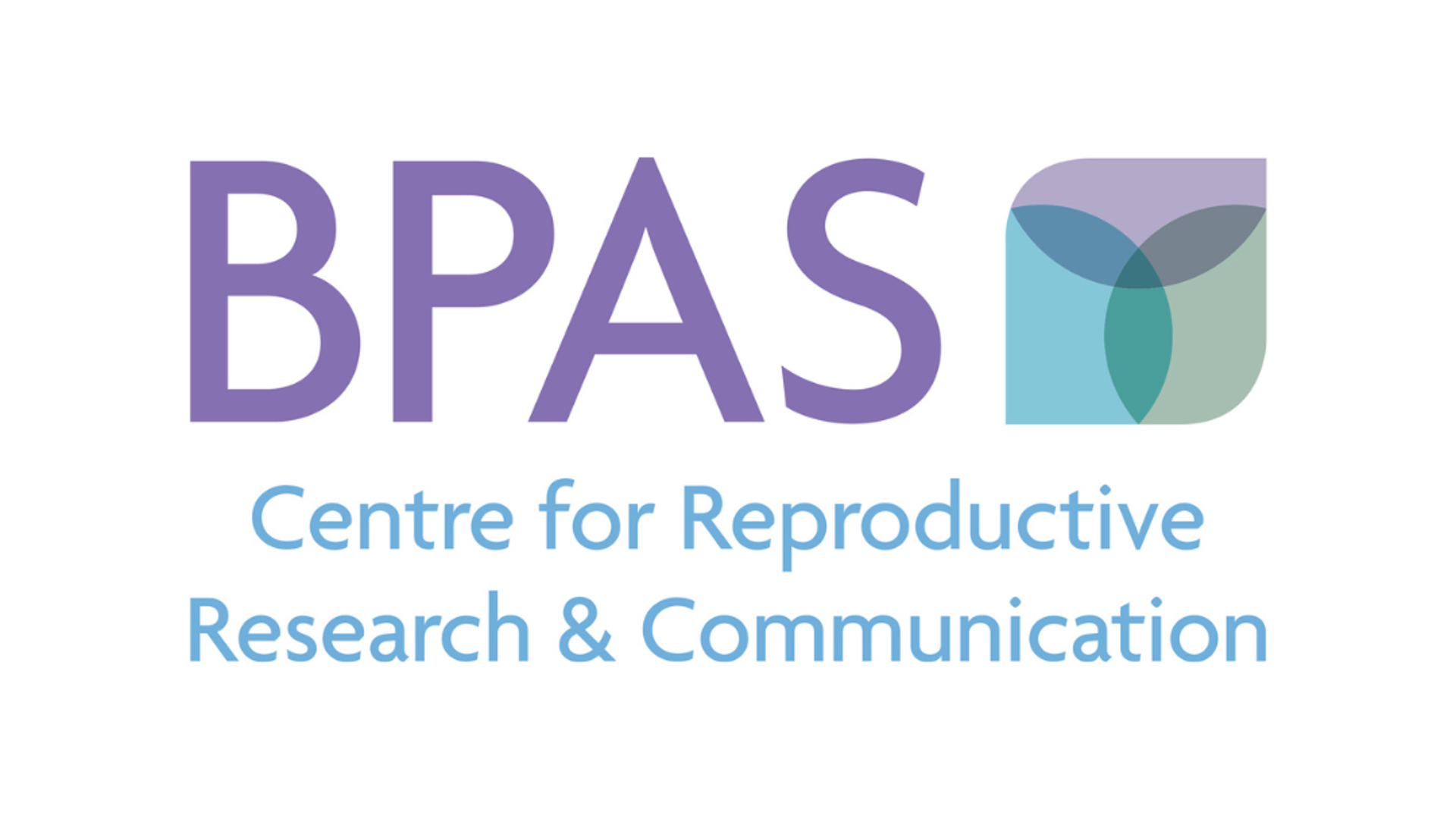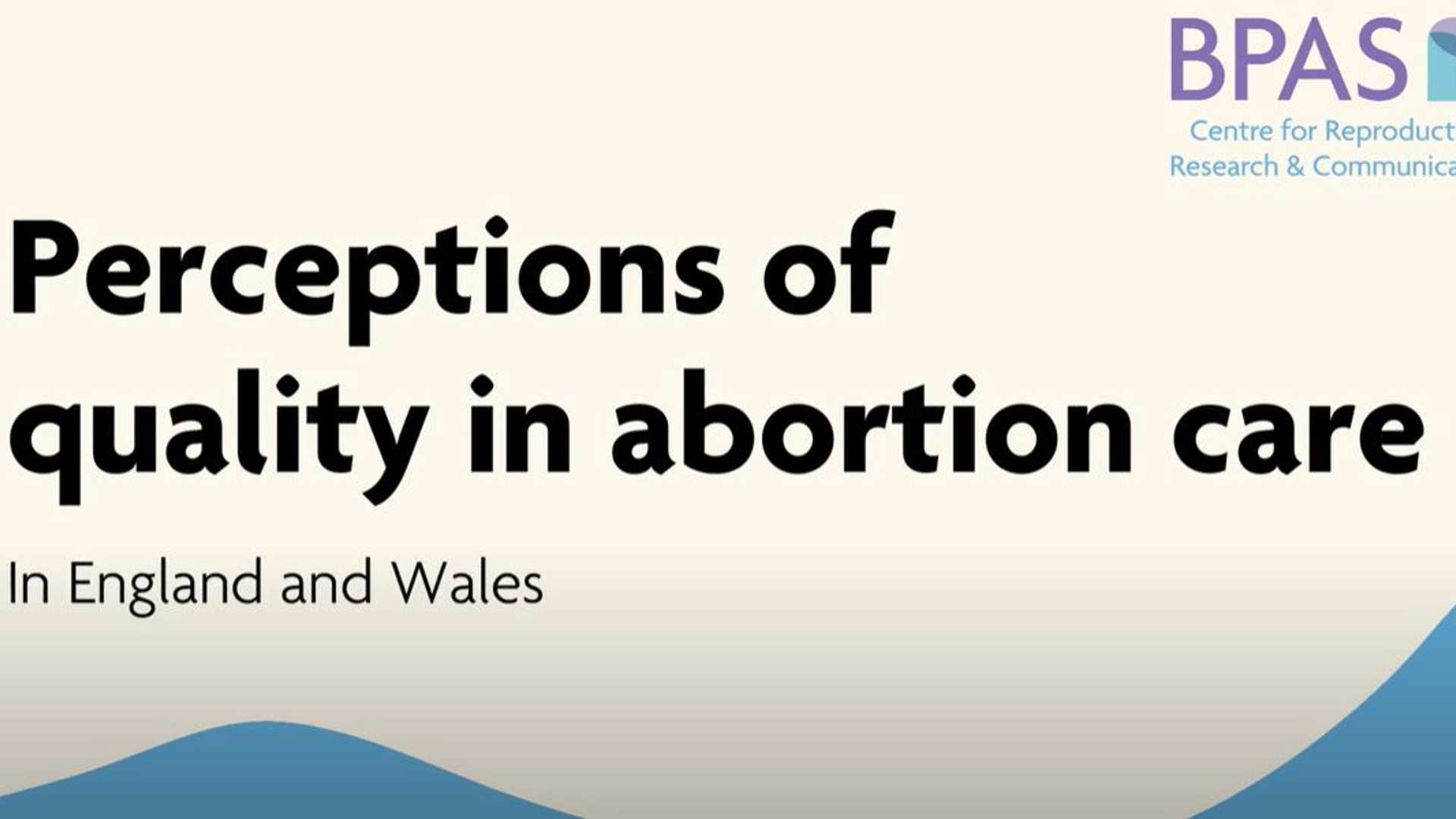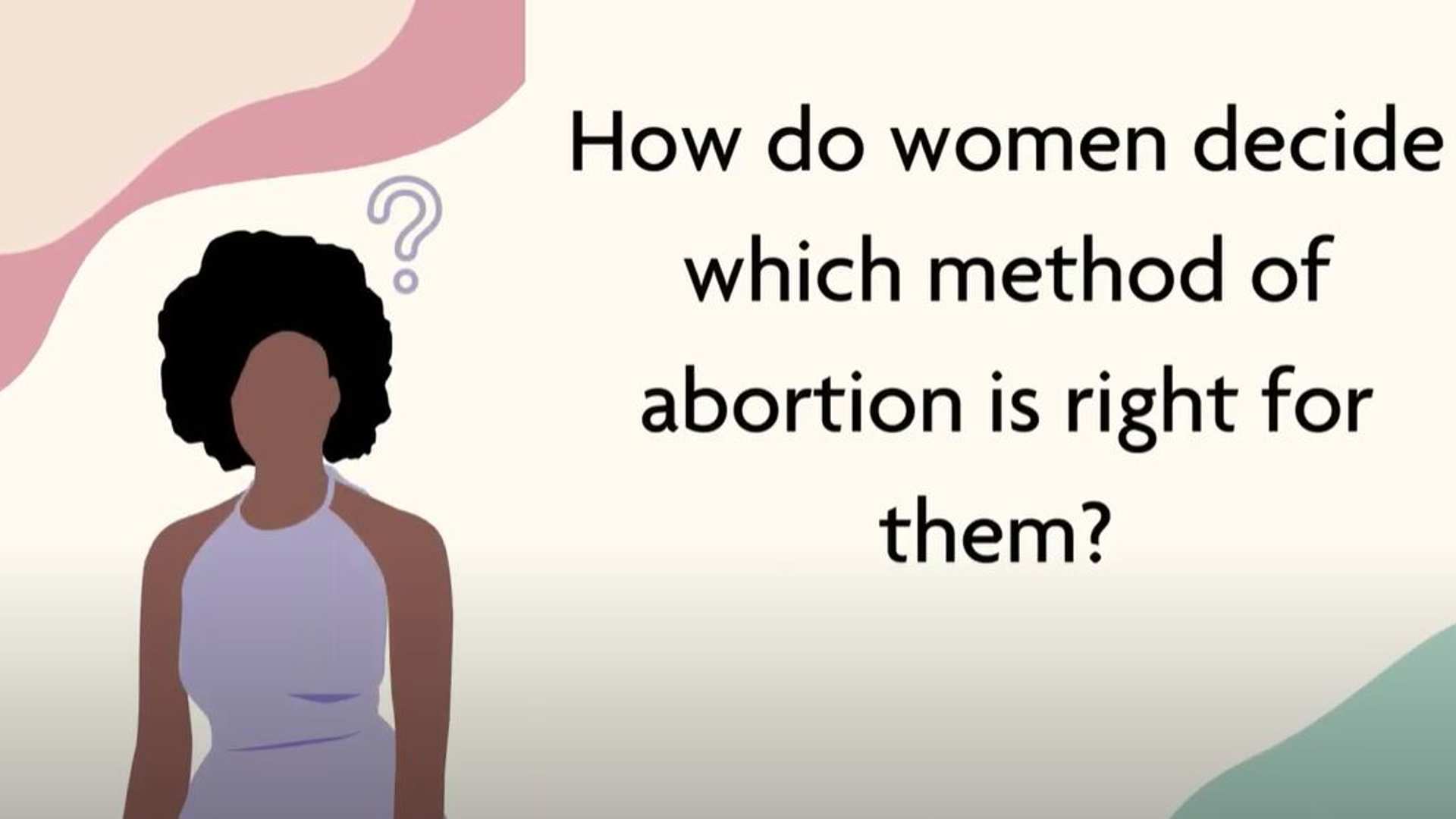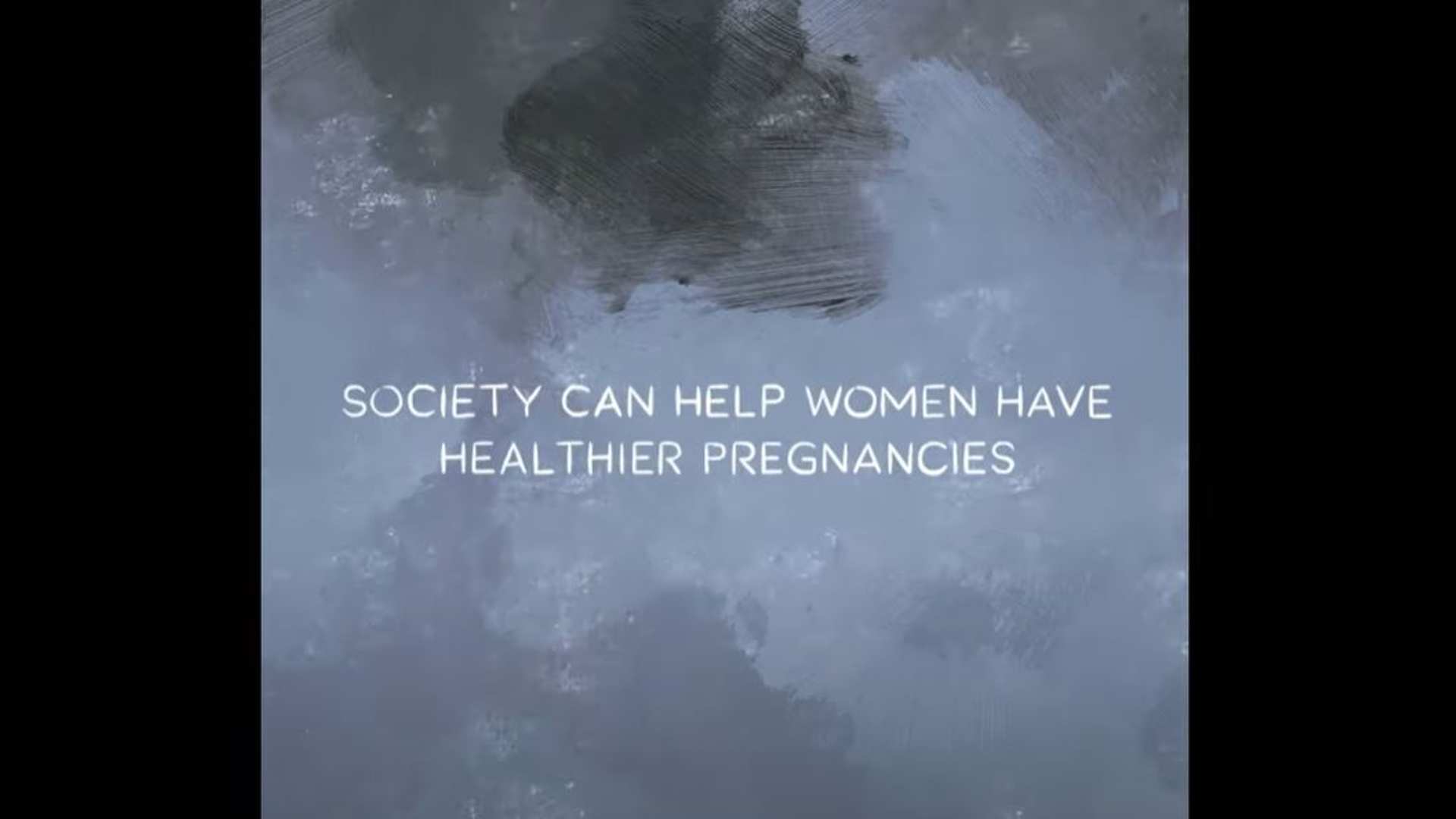
Research projects at BPAS are monitored by BPAS Research and Ethics Committee (REC), a sub-committee of the Clinical Governance Committee.
- The role of the REC is to examine all proposals for research, audits or service evaluation involving clients, or materials derived from clients, which are to be carried out within BPAS units or with BPAS staff, and to ensure that such activities conform to generally accepted ethical principles and standards. The committee also provides advice on ethical issues that affect BPAS. Click to read BPAS’ Research and Ethics Committee Terms of Reference.
- BPAS Research and Ethics Committee is a member of the Association of Research and Ethics Committees (AREC) and the National Research and Ethics Service reference group.
View our completed research projects below
Abortion care
Ultrasounds in abortion care
Routine ultrasound scanning to determine gestational age and pregnancy location has long been part of pre-abortion assessment in Britain, despite not being legally required or recommended in national clinical guidelines. To support implementation of fully telemedical abortion care (implemented in Britain in April 2020), the Royal College of Obstetricians and Gynaecologists (RCOG) issued clinical guidance for an 'as-indicated' approach to pre-abortion ultrasound, removing the need for a clinic visit. We aimed to understand patient experiences of ultrasound in abortion care by conducting a qualitative study with individuals who had abortions with and without an ultrasound scan. Further research and user-testing of strategies to improve the scan experience should be undertaken. Patient testimonies on the negative impact of ultrasound scans in abortion care should reassure providers that omitting them according to patient preference is a positive step towards providing patient-centred care.
Lohr PA, Reeves MF, Creinin MD
Contraception. 2010 Mar;81(3):240-244. Epub 2009 Nov 14.
Click here for the full abstract
Patient experience & quality of care in abortion care

This study was undertaken by CRRC staff with the objective to better understand service-users' perceptions of quality of care in abortion services in England and Wales. From December 2018 to July 2019, we interviewed 24 women who had an abortion at a BPAS clinic.
We identified 4 major themes that contributed to participant’s perception of high quality of care: 1) interpersonal interactions with staff or other patients, 2) being informed and prepared, 3) participation and choices in care and 4) accessibility. The findings of this research can be read here. Read a lay briefing of the project here.
We performed a secondary analysis of the collected data to improve our understanding of service-users' preferences for abortion method. We have created a short animation to share our findings:
The full article can be accessed here or you can request a copy from us. Read the research briefing here.

We performed a secondary analysis of the collected data to improve our understanding of service-users' preferences for abortion method. We have created a short animation to share our findings.
The full article can be accessed here or you can request a copy from us. Read the research briefing here.
Seeks to examine reproductive health travel to the United Kingdom (UK), focusing on women who travel from the Republic of Ireland to the UK for an abortion. Irish women’s experiences and perspectives are poorly understood. Stories from women who shared their experiences publicly tend to highlight the tragic nature of their circumstances, in particular in cases of severe fetal abnormalities. However, it is also clear that the circumstances of women who seek this care vary and many have ordinary circumstances for seeking abortion. This project aims to better understand the experiences of the latter group by using a systematic qualitative research approach.
Two research questions guide this study: (1) What are the challenges faced by Irish women travelling to the UK for abortion care (including in terms of resources, the need to conceal travel, and consequences for work, family, and social life) and how do women navigate these challenges?, and, (2) What is the nature of any delays in receiving abortion care that these women experience? This research is being conducted by Joanna Mishtal, PhD, Associate Professor of anthropology based at the University of Central Florida, and current Visiting Fellow at Kent University, Kent Centre for Law, Gender and Sexuality - Kent Law School.
Publication to follow.
Controversy exists as to whether 'abortion or 'termination of prgnancy' should be used by health professionals during interactions with women and in published works. Self administered anonymous questionnaires were distributed to women attending 54 abortion clinics in Scotland, England and Wales during a 4 month period in 2015. The Study concluded that most women seeking abortion did not find the terms 'abortion and 'termination of pregnancy distressing. When given a choice of terms, more women who expressed a preference chose 'termination of pregnancy'.
Sharon Cameron, Patricia A. Lohr, Roger Ingham
This qualitative study explored women's understanding of disposal of fetal tissue following elective abortion. Semi-structured interviews were undertaken with women who have undergone an elective abortion up to the legal gestational age limit of 24 weeks. This study was funded by the Society of Family Planning.
Patricia Lohr, Mandy Myers, Jo Wade, Naomi Pfeffer, BPAS
View the published abstract
Seasonal variations in abortion have been reported in many countries, including the UK, United States of America and Australia. This study explores - over a seven year period (2002-2008) - seasonality in conception, help seeking, abortion, and gestational age at abortion.
The investigator analysed several anonymous data sources including bpas and the National Survey of Sexual Attitudes in Lifestyles in order to build up a comprehensive picture of the factors contributing to seasonality in abortion.
It is hoped the findings will further our understanding of the phenomenon and contribute to the better targeting, tailoring and timing of prevention of unwanted conceptions and wider service provision.
The study is funded by the Medical Research Council.
Wendy McDowell is located at the Centre of Sexual and Reproductive Health Research, London School of Hygiene and Tropical Medicine.
We are working with researchers at the London School of Hygiene and Tropical Medicine on the SACHA study.
The objectives of this project are to:
- collate, synthesise and summarise recent evidence for innovative models of abortion care with the potential to enhance access, quality of experience and cost-effectiveness
- explore the potential for beneficial and harmful consequences of current trends in abortion provision and identify implementation strategies to harness positive outcomes of current developments and mitigate adverse outcomes
- assess the potential of General Practitioners (GPs) and non-clinician providers in abortion provision, their education and training needs and their views on innovations in care
- elicit women’s views on current experiences of abortion and on preferences for abortion techniques, models of care and sources of support
- consult decision-makers on the range of innovative abortion practices and procedures and on the potential feasibility, acceptability and sustainability of their adoption in UK health services and systems.
Telemedicine & digital interventions in abortion care
We conducted a web-based survey with patients who accessed BPAS medical abortion services during the COVID-19 pandemic using the telemedical care pathway. Our aim was to assess satisfaction and experiences of the telephone consultation and provision of medicines from pills by post. Of 1,333 respondents, 75.8% described home us of medications as “straightforward” and most respondents were “very satisfied” (78.3%) or “satisfied” (18.6%) with the care pathway. You can read the full publication here or our easy-to-read research briefing here.
This project evaluated the cost-effectiveness of a new telemedical model of abortion care which currently has temporary approval in the UK. It will form a key part of the evidence presented to the UK Secretary of State for Health and Social Care, who will shortly decide whether to permanently change the law.
Early medical abortion by telemedicine in the United Kingdom: A cost-effectiveness analysis.
This research was a collaboration with University of Texas – Austin, MSI, and NUPAS and is the largest ever study on UK abortion care. The study analysed data from more than 50,000 abortions before and after medical abortion via telemedicine was introduced in response to the COVID pandemic. Read the published article here.
The study tested the effectiveness and feasibility of remote communication technologies to increase follow up after early medical abortion. Women were randomised to 'remote' or 'clinic' follow-up. 'Remote' follow up incorporated a low sensitivity pregnancy test, online symptom questionnaire and text or telephone follow-up by non-clinical staff 2 weeks after treatment. 'Clinic' based follow-up included ultrasound scan 1 week after treatment. Rates of complications, acceptability and preferences were compared.
Bracken H, Lohr PA, Taylor J, Morroni C, Winikoff B.
View the published abstract
Understanding medical abortions
Objective: To evaluate outcomes with mifepristone 200 mg orally followed 24–48 h later by misoprostol 800 mcg vaginally for medical abortion at 64–70 days of gestation.
Study design: We reviewed electronic databases and medical records for medical abortion cases at 64–70 days' gestation at British Pregnancy Advisory Service clinics in England and Wales from May 2015 through October 2016. Women selected in-office follow-up or self-evaluation of abortion outcome using a checklist along with low-sensitivity urine pregnancy testing. We excluded cases in which we could not locate records and when women did not proceed with medical abortion, did not use misoprostol following mifepristone if abortion had not occurred and did not attend a scheduled follow-up assessment. We analysed demographic characteristics, treatment outcomes and significant adverse events. We defined treatment success as complete abortion without surgical evacuation and without continuing pregnancy.
Results: Of 2743 cases identified, we could not locate 40 charts and excluded 30 cases, leaving a final sample of 2673. Overall, 2538 (94.9%, 95% CI 94.1–95.8) women had a successful medical abortion. Reasons for failure included continuing pregnancy (n=90, 3.4%, 95% CI 2.7–4.1), retained nonviable pregnancy (n=2, 0.1%, 95% CI0–0.2) and incomplete abortion (n=43, 1.6%, 95% CI 1.1–2.1). Of those with continuing pregnancies, 81 underwent a uterine aspiration and 9 opted to continue the pregnancy. Thirty-five (1.3%, 95% CI 0.9–1.7) women had significant adverse events; 16 (0.6%, 95% CI 0.3–0.9) underwent an in-hospital aspiration. Pelvic infection (n=4, 0.2%) and transfusion (n=1, 0.03%) occurred rarely.
Conclusion: Medical abortion from 64 to 70 days with mifepristone and vaginal misoprostol is effective with a low rate of serious adverse events. Implications: Medical abortion between 64 and 70 days of gestation may be offered on an outpatient basis using mifepristone and vaginal misoprostol. Service provision without an in-person follow-up is feasible. Not all women with a continuing pregnancy after medical abortion treatment opt to have an aspiration procedure.
Jennifer K Hsia, Patricia A Lohr, Jeanette Taylor, Mitchell D Creinin
Lohr PA, Starling JE, Scott JG, Aiken ARA.
Abstract:
Objective: To evaluate outcomes with simultaneous administration of mifepristone and misoprostol for medical abortion at 63 days of gestation or less in the year after its implementation in a British clinic system.
Methods: We conducted a retrospective cohort study using deidentified data from the electronic booking and complications databases and medical records of women who underwent medical abortion at British Pregnancy Advisory Service. Our primary outcome was treatment success with simultaneous dosing compared with a regimen with a 24- to 48-hour interval between medications. We defined success as complete abortion without surgical evacuation and without continuing pregnancy. To assess relative regimen effectiveness while accounting for self-assignment to simultaneous or interval dosing, we modeled the probability of treatment success using logistic regression with propensity score adjustment for demographic and clinical characteristics. Secondary outcomes were reasons for abortion failure and clinically significant adverse events (hospital admission, blood transfusion, intravenous antibiotic administration).
Results: Of 28,901 women treated between May 2015 and April 2016, 85% chose simultaneous dosing. Overall success rates were high with both regimens but lower with simultaneous than with interval dosing (94.5% vs 97.1%, respectively, adjusted relative risk 0.973, 95% CI 0.967-0.979). For both regimens, success rates were lower at higher gestational ages, but the relative effectiveness of simultaneous dosing did not vary significantly with gestational age (P=.268). Surgical intervention rates for continuing pregnancy were lowest at 49 days of gestation or less (1.4% simultaneous vs 0.2% interval, P<.001) and highest at 57-63 days of gestation (5.0% and 2.2%, P<.001). The rate of clinically significant adverse events was 0.2% and did not differ by regimen (P=.972).
Conclusion: Simultaneous administration of mifepristone and misoprostol is 97% as effective as a 24- to 48-hour interval at all gestational ages 63 days or less with no increase in the risk of clinically significant adverse events. Pragmatic use of simultaneous dosing is reasonable given the small difference in effectiveness.
168 women undergoing early medical abortion at bpas were surveyed about their opinions and experience of home management of early medical abortion (EMA) with mifepristone and misoprostol. Conclusions of the survey were that home management of EMA was acceptable to most women surveyed and for many, was preferable to a clinical setting.
Ann Furedi, Patricia Lohr, Jo Wade, Laura Riley, BPAS
Read the full abstract
This multi method study was commissioned by the Department of Health to assess the safety, effectiveness, and acceptability of early medical abortions in non traditional settings. Two pilot sites, two "traditional sites" and bpas as an independent sector site were evaluated. No discernible differences were found at the sites. The study highlighted the need for detailed guidelines and the importance of skilled nursing staff to any expansion of EMA services.
Roger Ingham Centre for Sexual Health Research, University of Southampton
Read the full report
Understanding surgical abortions
This audit will describe outcomes with D&E at 15-24 weeks gestation performed by BPAS from 1st April 2011 and 31st March 2013. Based on annual procedure statistics, a review over 2 years will total approximately 9,500 cases.
The specific aim is to describe outcomes and to identify factors associated with major, minor, immediate and delayed complications of D&E. A secondary outcome is to identify socio-demographic, reproductive health and procedure-related characteristics associated with complications.
Patricia A. Lohr, Chelsea Morroni, Richard Lyus, Jeanette Taylor.
Publication to follow.
Feticide with intra-cardiac potassium chloride is routinely performed at BPAS before D&E at 22 weeks gestation or greater and in some cases at lower gestations. This service evaluation will assess D&E outcomes with and without feticide using a "before and after" or double cohort design.
In the first half of the year, BPAS' D&E service will continue as usual and in the second half, feticide will be discontinued. Data will be collected on outcomes, including safety and efficiency, of all D&E procedures. In addition, we will survey women and staff about the acceptability of feticide and their experiences of an options about its use. This project is funded by the Society of Family Planning.
Patricia A. Lohr, John Parsons, Chelsea Morroni, Jeanette Taylor
The aim of this study is to obtain more data on the optimal time to leave osmotic dilators in situ, the number of dilators to use at different gestational ages, when termination of pregnancy can be provided, and the impact of these parameters on clinical outcomes. We hope to confirm that the use of Dilapan-S/Dilasoft meets the expected efficacy and safety outcomes and to confirm the recommendations provided in the product instructions for use. This will be done by collecting data in an e-registry from a range of providers in different countries. As the study is international and multicentre, we will be able to compare the clinical practice of using dilators within the other study sites to learn more about the impact of different clinical practices on clinical outcomes.
Research concluded and abstract awaited
Abortion care for young people
This research was commissioned by the Young London Matters Teenage Pregnancy Work-Strand group of the Government Office for London with BPAS as a participating study site. The purpose of the research was to identify factors associated with the disproportionately high proportion of under-18 conceptions that end in abortion in London, and underlying factors associated with the disproportionately high under-18 repeat abortion rates in London. The research explored young women's attitudes towards sexual behaviour, contraception and abortion decision-making with groups of young women in schools and young women who had made the decision to terminate pregnancies. The aim is to improve the sexual health and personal relationships of young Londoners, and inform future commissioning and provision of services (contraception and sexual health, targeted youth support services, extended services, sex and relationships education).
Lesley Hoggart, Policy Studies Institute
Executive Summary
Full report - Young people in London: abortion and repeat abortion
This exploratory study investigated the availability and quality of support before and after termination of pregnancy and after miscarriage in young women in Coventry. Interviews were conducted with 15 professionals, and five young women. The report discusses influences on young women's decision making and makes recommendations for future policy and practice.
Geraldine Brady, Geraldine Brown, Gayle Letherby, Julie Bayley and Louise Wallace Applied Research Centre for Sustainable Regeneration, Coventry University
Read the summary
Understanding second trimester abortions
This study was a questionnaire survey that examined the reasons that women give for delays in seeking and obtaining an abortion. 883 women having a 2nd trimester abortion at non-NHS units, including bpas, were surveyed. The key findings were that no single reason emerged for the delay, most of the delay occurred before the request for an abortion although the delay was partly service related. Concerns about what happened during an abortion and complex relationships with partners also played a role.
Roger Ingham, Ellie Lee, Steve Clements and Nicole Stone Centre for Sexual Health Research, University of Southampton
Read the full report
Nursing & abortion care
Gallagher, K., Porock, D., & Edgley, A. (2010). The concept of 'nursing' in the abortion services. Journal of Advanced Nursing. 66(4), 849-857. This qualitative study explored the perceptions of nurses who work in abortion services. Nine nurses working in three different abortion clinics in the United Kingdom were interviewed. The study illuminated the importance of empowering nurses to treat clients as individuals and suggested that defined roles for nurses in abortion services would enable them to perform that role more effectively.
Katie Gallagher, University of Nottingham
Contraception
Incorporating thorough contraception counselling into an abortion consultation is challenging. This study compared contraceptive choices and methods received between two counselling models: (1) telephone counselling separate from the abortion consultation and (2) face-to-face counselling integrated into the consultation.
Patricia A Lohr, Abigail R A Aiken, Tracey Forsyth, James Trussell.
EllaOne (ulipristal acetate 30 mg tablet) is a selective progesterone modulator with antagonistic and partial agonist effects at the progesterone receptor. It is licensed for use as an oral emergency contraceptive that can be taken up to 120 hours after unprotected sexual intercourse.
During the clinical development phase, only a small number of pregnancies occurred following administration of ellaOne leading the European Medicines Agency and US Food and Drug Administration to request additional information on the potential effects of ellaOne exposure on pregnancy course and outcome. The manufacturer of ellaOne, HRA Pharma, have implemented a prospective multisite observational study (in the US and UK) to collate data on pregnancies that are carried to term and delivered, those that miscarry, and those that are terminated. BPAS’ participation will be limited to providing data on women in the latter two groups.
This study is one of the first surveillance studies to compare post vasectomy infection rates in different settings. It was conducted by bpas in collaboration with the nursing research department of DeMontfort University, Leicester. The aim of this study was to identify the incidence of surgical site infection (SSI) and associated risk factors following vasectomies. SSI data on vasectomies undertaken by bpas using 10 and 30 day post-discharge follow up was collected.
Michael Nevill, Jo Wade, Mandy Myers, Patricia Lohr, BPAS. Judith Tanner, Debra Khan, University of Leicester.
View the published abstract
In 1999 BPAS conducted a survey with 2,140 clients to determine whether or not women requesting abortion had used a method of contraception at the time they conceived and if they usually used a method of contraception. Findings support other studies that show a large percentage of women used a method of contraception at the time they conceived.
Ann Furedi, BPAS
Read the full report
Lohr PA, Forsyth T, Plummer C, Myers AJ, Field R
Click here to read the full abstract
Pregnancy
Pregnancy & alcohol
This project sought to understand the views and questions women have about alcohol and pregnancy as raised in online peer support forums. The aim of this project is of particular importance given the recent UK press coverage of an emerging policy framework on Foetal Alcohol Spectrum Disorder (FASD). The project was a collaboration between the University of Edinburgh and the CRRC and funded by the Institute of Alcohol Studies Small Grants Scheme.
The project aimed to explore both what posters discuss when talking about alcohol and pregnancy, and how these topics are discussed. In brief, this project drew on data collected from a sample of threads from an online forum from 2016 to 2021, which was analysed using discourse analysis.
This project sought to understand what midwives in the UK think about proposals to introduce mandatory alcohol screening during antenatal care. It was a collaborative project between the University of Southampton and the CRRC, and was funded by Public Policy Southampton’s ‘New Things Fund.’
The RAPP research team previously contributed to the consultation process for the NICE Quality Standard on Foetal Alcohol Spectrum Disorders (FASD), as led by colleagues at BPAS. Within our join consultant response, which included submissions by leading academics across the UK, the impact on both patients and midwives were stressed repeatedly. This project sought to add midwives’ perspectives to the policy debate. In brief, this project drew on results from an anonymous survey and a small number of stakeholder interviews.
Pregnancy, risks and choice
This project takes policies, guidance and healthcare practices about Foetal Alcohol Spectrum Disorder (FASD) as its focus. It builds on previous research considering the ascendence of claims about the salience of the ‘precautionary principle’ for providing advice to women about alcohol and pregnancy.
The activities in the project comprise policy analysis and public dissemination of findings and arguments, to draw attention to the novelty of this form of healthcare policy and practice and raise questions about its rationale and implications. The work is a collaboration between CPCS’ Professor Ellie Lee and the CRRC.
In terms of the ‘After Choice’ Project – it would be good to link to this page, as it contains all the work we completed throughout this project:

The WRISK project was a collaboration between BPAS and Cardiff University. Working with stakeholders from a wide range of disciplines, the project drew on women’s experiences to understand and improve the communication of public health and “risk messages” in pregnancy. The project was funded by the Wellcome Trust.
Publications from the WRISK Project
Risk messages relating to fertility and pregnancy: a media content analysis
This short film shows some of our findings and how we think we can make things better:
The processes of human egg formation, survival, differentiation and selection before birth can all affect an adult's fertility and reproduction at a later date. The immature eggs present before birth are much smaller than the mature egg, that is ovulated monthly by an adult woman, and there are many more of them. Most of these immature eggs do not survive beyond birth and they may start to develop abnormally during the processes of egg formation, for reasons that are not clear. The aim of this research was to improve understanding of this process and to develop new and better methods to study immature eggs in laboratories. Women attending for termination of pregnancy were given the opportunity to donate their fetal tissue to be used for research purposes. The human oocytes were studied in vitro to identify factors affecting their survival and differentiation.
Geraldine Hartshorne, Clinical Sciences Research Institute, Warwick Medical School.
View the abstract
Using qualitative methodology data was gathered from 12 focus groups run with men who have had a variety of different fathering experiences (n=50). The study was conducted in 2005-2006 and explored the moral sources of paternal responsibilities and rights. Findings show that overall, men from a variety of differing fathering backgrounds share a common set of moral intuitions about fatherhood. The author discusses how exploration of men's normative constructions of fatherhood may inform the philosophical/ moral debate around this topic.
Jonathan Ives, Centre for the study of Global Ethics, University of Birmingham
Read the full report
Pregnancy Testing
Medical abortion with mifepristone and misoprostol is safe and highly effective through 70 days gestation. However failed treatments do occur therefore it is important to identify ongoing pregnancies promptly and accurately so that they can be managed appropriately. The optimal mode of follow-up after early medical abortion is still being determined and investigators have looked at innovative ways to ensure that the abortion has been successful while reducing the burden of multiple clinic visits on women. This research aimed to compare sensitivity and specificity of LSPT to ultrasound for the detection of ongoing pregnancy (defined as presence of a fetal pole with cardiac activity on ultrasound) following medical abortion in women 64-70 days gestation. We hope the results will help influence the wider community of abortion providers with regard to medical abortion follow-up from 64- 70 days of gestation. Read the findings here.
Other topics in sexual and reproductive health
COVID-19 & Sexual and reproductive health
The COVID-19 pandemic has led to an unprecedented increase in demand on health systems around the world for care for people with COVID-19 infection, necessitating the allocation of significant resources, especially medical resources, towards the response. The increased demand, compounded by the restrictions on movement instituted as part of containment measures, have led to major disruptions in the provision of essential services including sexual and reproductive health (SRH) services. However, the COVID-19 pandemic has also led to rapid implementation of innovations and legal and regulatory changes that have transformed SRH services.
COVID-19 disrupted SRH service delivery in England. Delays in access to SRH care can have serious individual and public health impacts, and the findings from this study reflect the importance of maintaining SRH services during health emergencies. Expansion of pre-existing remote services and innovations in SRH service delivery were implemented during the pandemic, and while some of these changes were temporary, other adaptations have become permanent with lasting impacts that will require careful consideration
The CRRC team and the University of Illinois at Chicago (UIC) are collaborating on this survey to assess how the COVID-19 pandemic is impacting people’s choices surrounding fertility-related intentions, abortion, and pregnancy choices. Knowledge gained from the study may shed light on how pandemics impact pregnancy choices, allowing us to better prepare and meet the needs of people in similar situations in the future.
Researchers for the WRISK project ran an online survey to find out more about people’s experiences of the COVID-19 pandemic and ‘socially-distanced’ maternity care. Our key findings:
- Most respondents felt that those who are pregnant should practice stringent social distancing but recognised how impractical this could be, and the impact it had on their mental health. Many respondents over-interpreted advice to mean ‘shielding’, which had far reaching impacts.
- Restrictions placed on partner involvement in maternity care, particularly during scans, emergency attendances, and during labour assessments, caused widespread distress and anxiety.
- COVID-19 restrictions compounded existing failures in hospital based postnatal care to meet the needs of new mothers. On postnatal wards women described being lonely, sad, and struggling physically without visitors or sufficient staff to support and help them. Once home, the combination of reduced professional, family, and social support resulted in women feeling isolated and concerned that early signs of ill health may be overlooked.
You can also read the published article or our short research briefing.
Infection control
Nevill M, Myers M, Wade J, Lohr PA (2009)
Poster Presentation. APIC 36th Annual Educational Conference and International Meeting – The Power of Collaboration. Fort Lauderdale, FL. June 7 – 11.
Click here to view poster
Nevill M, Stewart L, Myers M, Wade J, Lohr PA (2009)
Poster Presentation. Infection Prevention Society Annual Conference – Infection Prevention 09, Harrogate. September 21-23.
Sexually Transmitted Infections
Melanie Rosenvinge, Tracey Forsyth, Michael Pollard, Wendy Majewska, Amanda J. Myers, Mark Pakianathan, Patricia A. Lohr.
Poster presentation at Second Joint Conference of the British HIV Association (BHIVA) with the British Association for Sexual Health and HIV. 21 April 2010, Manchester, England.
Click here for the abstract
Melanie Rosenvinge, Wendy Majewska, Tracey Forsyth, Elizabeth Vaceral, Kamal Ohja, Michael Pollard, Amanda J. Myers, Patricia A. Lohr, Mark Pakianathan.
Poster presentation at Second Joint Conference of the British HIV Association (BHIVA) with the British Association for Sexual Health and HIV. 21 April 2010, Manchester, England.
Click here for the abstract

Collaborate with us
If you are a student or a researcher with a project you would like to undertake and looking for a host organisation, do get in touch.
We have previously accepted students and fellows from Imperial College London, Kent University, Sussex University, Princeton University, Harvard Law School and Yale Law School.


Awards, grants and prizes
The Heather Trickey Essay Prize
This prize encourages work reflecting the contribution and commitment of Dr Heather Trickey to finding common ground in the field of women’s reproductive health and women’s rights.
By bringing together those of differing perspectives, we’ll develop innovative, practical policy solutions to difficult problems.
Peter Huntingford Memorial Prize
BPAS has endowed the Peter Huntingford Memorial Prize to mark the late Professor Peter Huntingford’s contribution to obstetrics and gynaecology.



